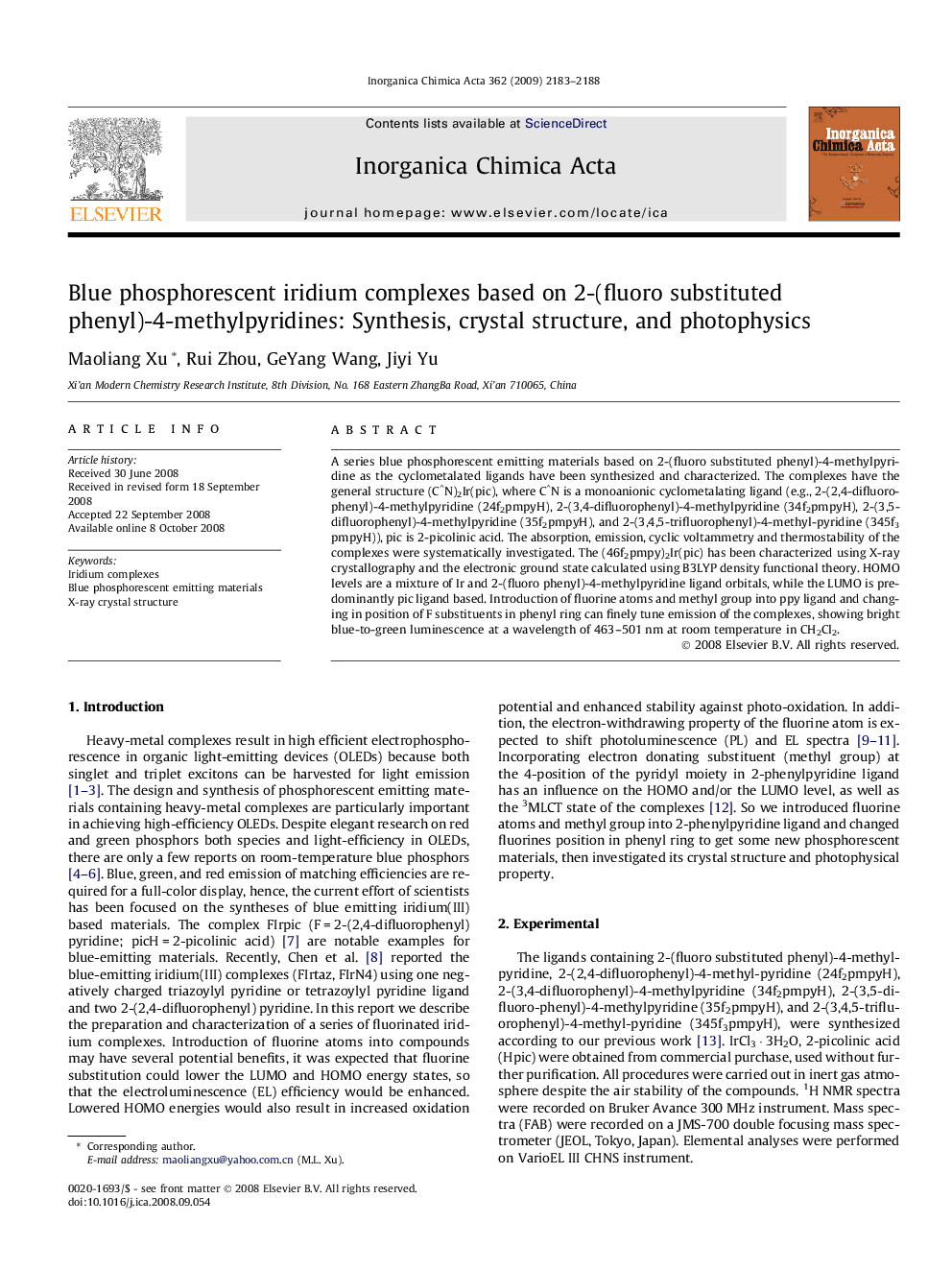| Article ID | Journal | Published Year | Pages | File Type |
|---|---|---|---|---|
| 1309838 | Inorganica Chimica Acta | 2009 | 6 Pages |
A series blue phosphorescent emitting materials based on 2-(fluoro substituted phenyl)-4-methylpyridine as the cyclometalated ligands have been synthesized and characterized. The complexes have the general structure (C^N)2Ir(pic), where C^N is a monoanionic cyclometalating ligand (e.g., 2-(2,4-difluorophenyl)-4-methylpyridine (24f2pmpyH), 2-(3,4-difluorophenyl)-4-methylpyridine (34f2pmpyH), 2-(3,5-difluorophenyl)-4-methylpyridine (35f2pmpyH), and 2-(3,4,5-trifluorophenyl)-4-methyl-pyridine (345f3pmpyH)), pic is 2-picolinic acid. The absorption, emission, cyclic voltammetry and thermostability of the complexes were systematically investigated. The (46f2pmpy)2Ir(pic) has been characterized using X-ray crystallography and the electronic ground state calculated using B3LYP density functional theory. HOMO levels are a mixture of Ir and 2-(fluoro phenyl)-4-methylpyridine ligand orbitals, while the LUMO is predominantly pic ligand based. Introduction of fluorine atoms and methyl group into ppy ligand and changing in position of F substituents in phenyl ring can finely tune emission of the complexes, showing bright blue-to-green luminescence at a wavelength of 463–501 nm at room temperature in CH2Cl2.
Graphical abstractA series blue phosphorescent emitting materials based on 2-(fluoro substituted phenyl)-4-methylpyridine as the cyclometalated ligands have been synthesized and characterized. The (46f2pmpy)2Ir(pic) has been characterized using X-ray crystallography and the electronic ground state calculated using B3LYP density functional theory. Introduction of fluorine atoms and methyl group into ppy ligand and changing in position of F substituents in phenyl ring can finely tune emission of the complexes, showing bright blue-to-green luminescence at a wavelength of 463–501 nm at room temperature in CH2Cl2.Figure optionsDownload full-size imageDownload as PowerPoint slide
